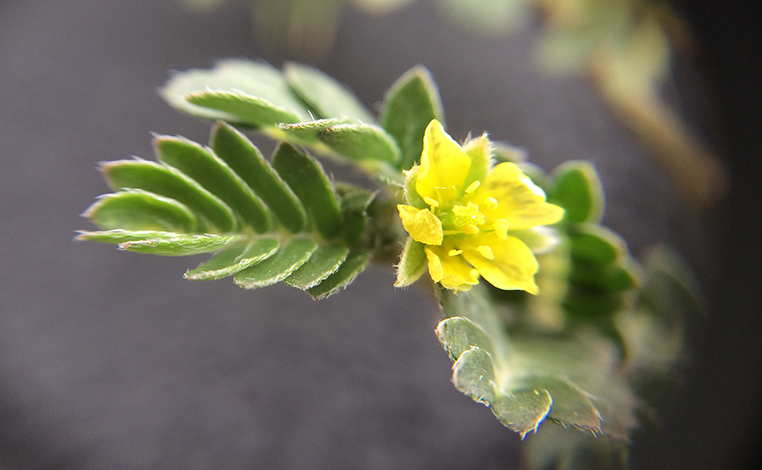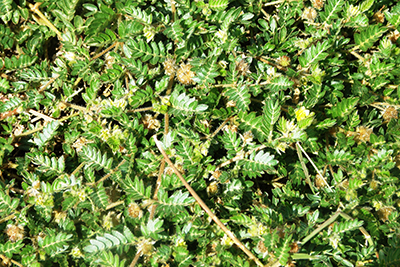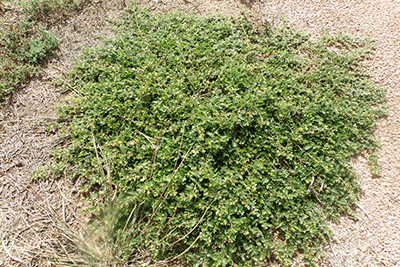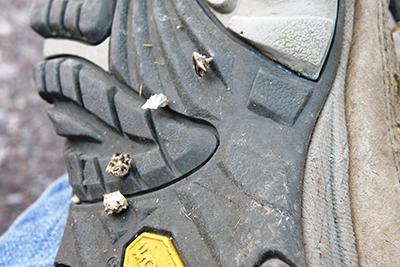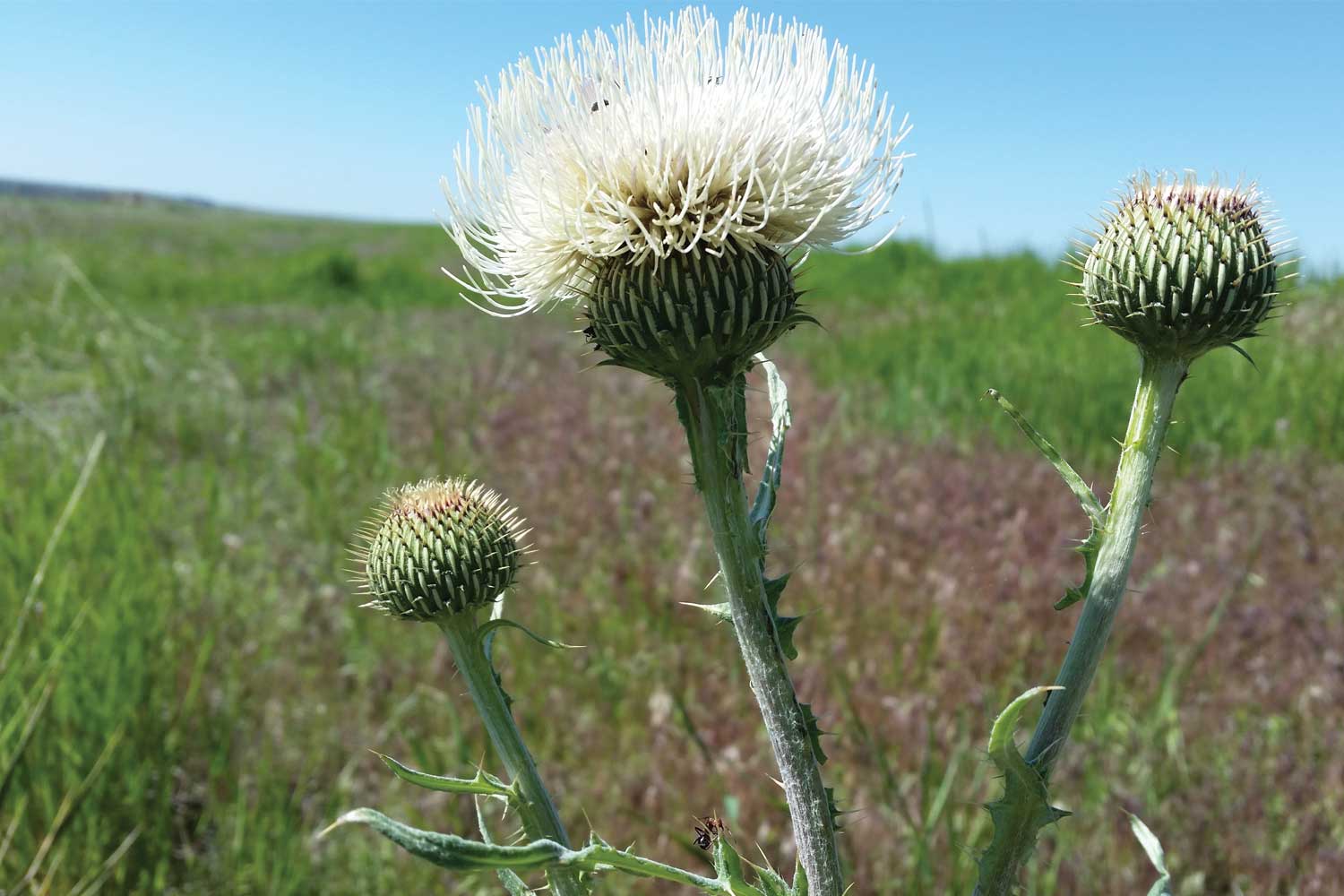Puncturvine
Tribulus terrestris
Keys to Identification
- Small yellow flowers
- Dissected leaflets
- Woody, spiny seedpods
Family
Zygophyllaceae – Caltrop Family
Other Names
Goatheads
USDA Code
TRTE
Legal Status
Colorado Noxious Weed List C
Identification
Lifecycle
Annual
Growth form
Low growing forb
Flower
Small 5-petaled yellow flowers at the leaf axils. March-October
Seeds/Fruit
Seeds are woody with two spines. Separate into 4-5 nutlets, each with 3-5 seeds. May remain viable for 5+ years
Leaves
Dark green, pinnately compound, opposite
Stems
1.5-5 feet long, trailing along the ground. Slender, slightly hairy. Grow radially from a central crown
Roots
Taproot
Seedling
Seed leaves (cotyledons) are oblong, opposite, slightly hairy. Similar to mature leaves
Similar Species
Exotics
Prostrate spurge, Prostrate knotweed
Natives
None
Impacts
Agricultural
Poisonous to sheep
Ecological
Forms large dense mats that prevent other plants from growing
Human
Seedheads may puncture bike tires. Seedheads may attach to gear, pets, and shoes
Habitat and Distribution
General requirements
Likes sunny, dry, sandy to gravely sites. Found in pastures, orchards, vineyards, rights-of-way, trailheads, and vacant lands
Distribution
Found throughout the continental US and parts of Canada
Historical
Originally fro Europe, Africa and Asia
Biology/Ecology
Life cycle
Annual. Germinates throughout the season from spring until frost
Mode of reproduction
Seed. May stay viable for 5+ years
Dispersal
Seeds attach to wildlife, pets, vehicles and equipment
References
Invasives.org –https://www.tnipc.org/invasive-plants/plant-details/?id=93
UC Davis IPM – http://ipm.ucanr.edu/PMG/WEEDS/puncturevine.html
BugwoodWiki – https://wiki.bugwood.org/HPIPM:Puncturevine
